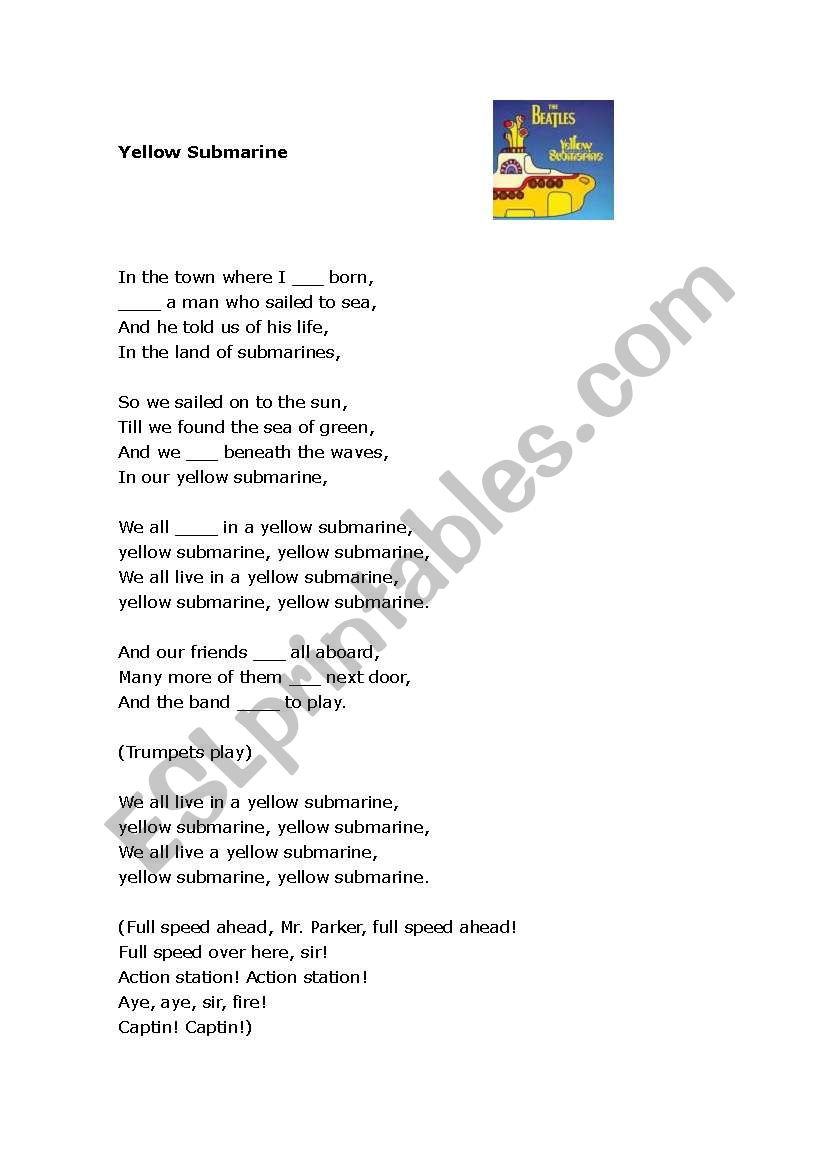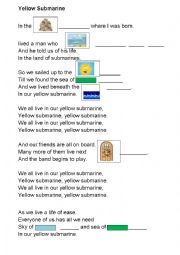

Released: 13 September 1999, 14 September 1999 (USA) Personnel In one of the album’s most joyful moments, listeners follow along as the band struggles to get through a recording of “And Your Bird Can Sing.” Why? They can’t stop laughing.Recorded: 21 October 1965 – 11 February 1968 Producer: George Martin
#Yellow submarine song history full
They hear the backing track to “Rain”-which was slowed down for the song’s final version-played at a chipper full speed. On the reissue, listeners hear George Martin and Paul McCartney debate whether the strings on “Eleanor Rigby” should have vibrato, eventually deciding that they shouldn’t. The new Revolver also shares thematic similarities with Get Back: Both projects pull back the curtain on some of the Beatles’ most beloved songs, humanizing the four men who have achieved divine status in the eyes of so many fans. “It’s like I’m giving them a cake and they’re giving me flour, eggs, and milk and some sugar.” Martin himself doesn’t entirely understand the process, he admits to Variety’s Chris Willman. “It has to learn what the sound of John Lennon's guitar is, for instance, and the more information you can give it, the better it becomes.” The new technology relies on artificial intelligence and machine learning, Martin tells BBC News’ Mark Savage. To make it, Jackson’s team developed technology that allowed them to split mono tracks into their separate parts-a guitar on one track, vocals on another, and so on. The film follows the Beatles as they record what would eventually become their final album, Let It Be, and give their last-ever performance together. For a long time, this made the prospect of remixing Revolver-or anything that came before it-seem impossible to Martin and his team.īut a technological breakthrough occurred during the production of Peter Jackson’s documentary Get Back, which was released last year. The album is a mono mix, not a stereo mix, meaning that all instruments and vocals on any given song were collapsed into one stream of sound, as opposed to the modern approach of recording them on different tracks. Though Revolver finds the Beatles evolving into avant-garde songwriters, the technology used to record it was still fairly run-of-the-mill. Among its 14 tracks, the album includes the politically-charged “ Taxman” the orchestral, heartbreaking “ Eleanor Rigby” and “ Tomorrow Never Knows,” the swirling LSD anthem that opens with the lyrics, “Turn off your mind, relax and float downstream.” They had started to morph from a suit-and-tie-clad boy band into a psychedelic, experimental rock project with 1965’s Rubber Soul on Revolver, that transformation appears complete. Originally released in 1966, Revolver was a turning point for the Beatles. German artist Klaus Voormann holding his pop art album cover for Revolver Ullstein Bild via Getty Images Pepper’s Lonely Hearts Club Band (2017), The Beatles (2018) (also known as “the White Album”), Abbey Road (2019) and Let It Be (2021). Revolver is the fifth Beatles album that Martin has remixed and expanded. It also includes a number of unpolished studio recordings that offer glimpses into the band’s creative process. The reissue features newly-mixed versions of the album’s 14 tracks and 2 singles, as well as all of the originals. The origin of “Yellow Submarine” is one of many surprises packed into the new Revolver. I said to Paul, ‘I always thought this was a song that you wrote and gave to Ringo.’”


“I had no idea until I started going through the outtakes,” Martin tells Rolling Stone’s Rob Sheffield.


 0 kommentar(er)
0 kommentar(er)
